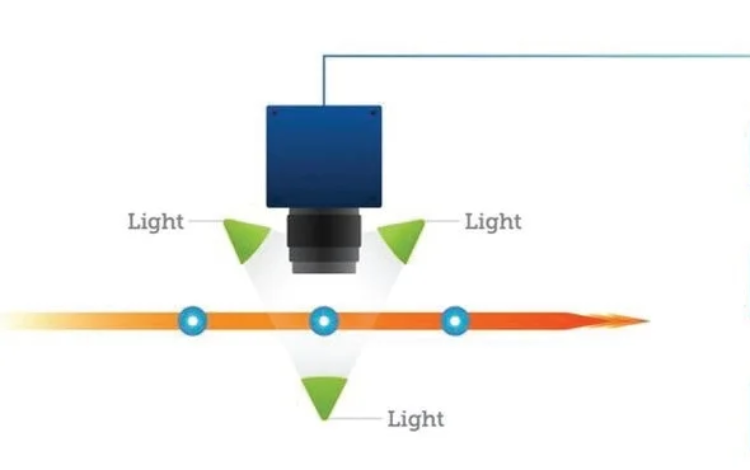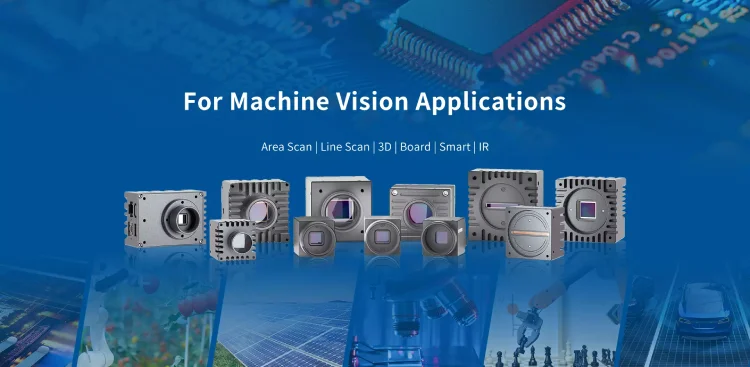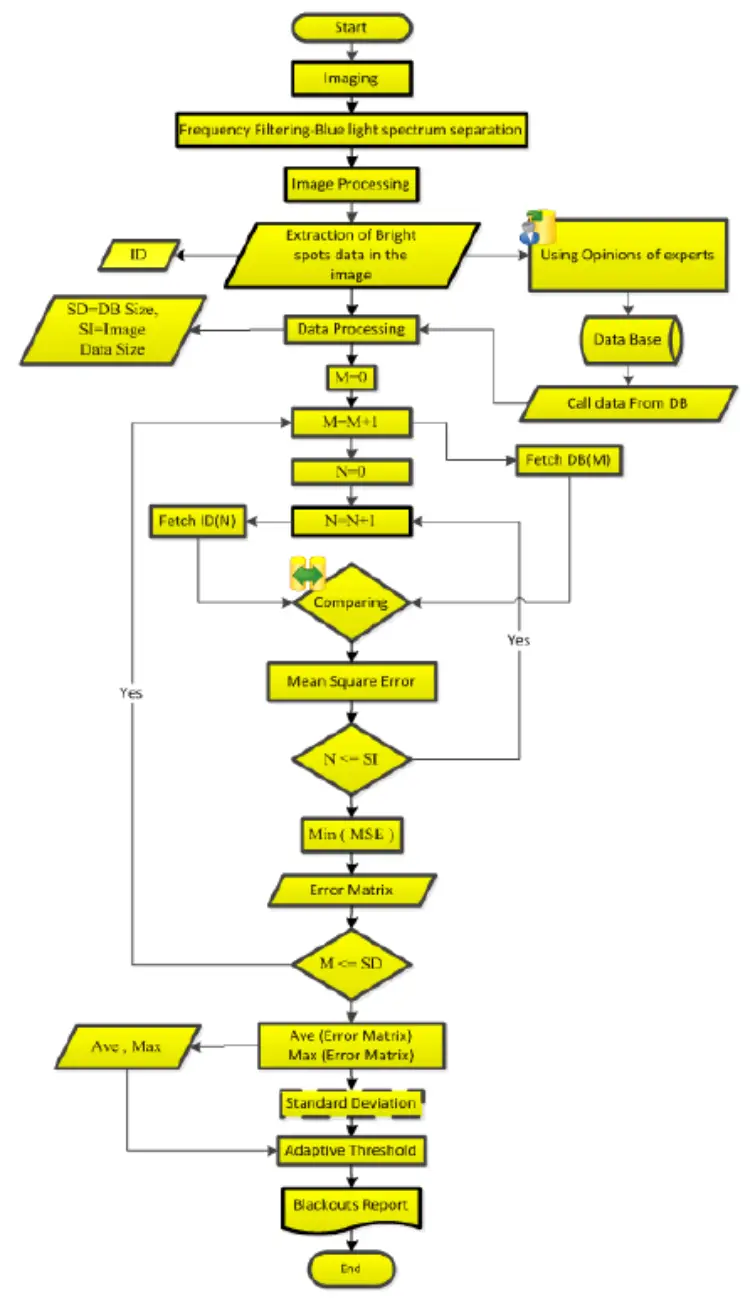What is machine vision
This study introduces machine vision from many perspectives.
The following is more information about machine vision:
What is machine vision?
How machine vision works
Components of machine vision
Machine vision applications
1. What is machine vision?
This is a concept that we hear a lot in the tech world but may not fully comprehend. Let us dig deeper and demystify machine vision.

First, let us explain “machine”. In computer science, a "machine" usually refers to a device or system that can perform a specific task. "Vision" involves the natural ability of humans and many other creatures to receive and interpret information about the surrounding environment through their eyes. Therefore, machine vision refers to the simulation and enhancement of human visual abilities by machines.
2. Working Principles of Machine Vision
How does machine vision work? This requires an understanding of the working regulation of machine vision.

Image acquisition: This is the first and most basic step of the machine vision system. Through a camera or other type of sensor, the machine captures successive frames of images. At this stage, factors that we usually need to consider include light source conditions, image quality, and resolution.
Preprocessing: The collected raw image data often needs to go through a series of preprocessing steps before it can be further analyzed. This may include operations such as grayscale, filtering, and noise reduction to make the image more suitable for subsequent assessment.

Feature extraction: This step involves selecting and identifying meaningful features from the image. These features may include the location, shape, texture, and other information of the object. Modern machine vision systems often use complex algorithms to automatically complete this step.
Pattern classification/recognition: In this step, the machine learning algorithm classifies or identifies objects in the image based on the extracted features.
Result output: Finally, after the above steps, the machine generates a result, which may be a judgment, label, or prediction.
3. Machine vision hardware composition

The first component is the industrial camera, which is also one of the most important components of the machine vision system. The camera captures image information and then converts it into a recognizable digital signal using image processing algorithms. In addition, industrial cameras also have an image processor module, which is mainly accountable for processing the images captured from the camera, such as denoising, sharpening, and color correction, to improve the quality of the images.

Lenses and filters. Lenses and filters focus the light collected by the image sensor and filter out unwanted light. Lens selection has a crucial impact on image quality. Common lens types include fixed focus , zoom , and wide-angle lenses. Filters are used to select specific wavelengths of light for imaging within a specific spectral range.
Light source module. The function of the light source module is to provide a stable light environment for the camera to ensure the clarity and brightness of the image. In different work environments, different types of light sources may be required. For example, when the camera needs to work in a strong light environment, it needs to use a flash; when the camera needs to work in a dark light environment, it needs to use a continuous light source or guided light. Therefore, a reasonable light source configuration is also crucial to the performance of the machine vision system.

Machine vision algorithm. Machine vision software algorithms, referred to as machine vision algorithms, are technologies that allow computers to "see" and "comprehend" images. It allows computers to recognize, analyze, and comprehend the content in images by simulating the human visual system.
Actuator/controller module. Finally, there is the actuator/controller module, which is a key part of controlling the entire machine vision system. The actuator can cause the robot arm or other device to move along a predetermined path, whereas the controller can control the action of the actuator according to a preset algorithm. Thus, machine vision systems can achieve precise operation and control of various objects, ultimately replacing human labor with machines.
4. Machine vision applications
Autopilot. Self-driving cars are an important application area of machine vision technology. Through cameras and sensors installed on cars, machine vision systems can capture vehicles, pedestrians, and objects on the road in real time and analyze and process this information. This enables cars to navigate autonomously in complex road environments, greatly improving driving safety and comfort.
Medical diagnosis. In the medical field, machine vision technology also plays an important role. For example, medical imaging technologies, such as computed tomography (CT) and magnetic resonance imaging (MRI), use machine vision theories to conduct non-invasive examinations of patients. In addition, machine vision can assist doctors in pathological evaluation and improve the accuracy and efficiency of diagnosis.
Industrial testing. In industrial production, machine vision technology is widely used for quality control and inspection. By monitoring and comparing products on the production line in real time, the machine vision system can automatically identify product defects and imperfections, thereby improving product quality and production efficiency. Simultaneously, this method can also reduce the labor burden on workers and production costs.
Security Monitoring. In the field of security, machine vision technology is also widely used. For example, smart surveillance cameras can realize real-time monitoring and management of public places through functions such as face recognition and behavior evaluation. In addition, machine vision can assist the police in tracking and locating criminal suspects, thus improving the detection rate and safety.
Art creation and design. In the fields of artistic creation and design, machine vision technology has also shown great potential. For example, computer-generated art (CGA) uses machine learning algorithms to generate realistic images, which can provide artists with unlimited creative space. In addition, machine vision can assist designers in three-dimensional modeling, rendering, and other tasks to improve design efficiency and quality.
Overall, machine vision is a powerful tool that allows us to let machines "see" and realize the world, thereby improving work efficiency, reducing errors, and even opening up new possibilities. Although this technology is still developing and improving, there is reason to believe that machine vision will play an increasingly important role in our lives over time.
Previous
Types and characteristics of light sources commonly used in machine vision
What is the use of light sources in machine vision?
Next

 Back to list
Back to list


_1657772844.jpg)